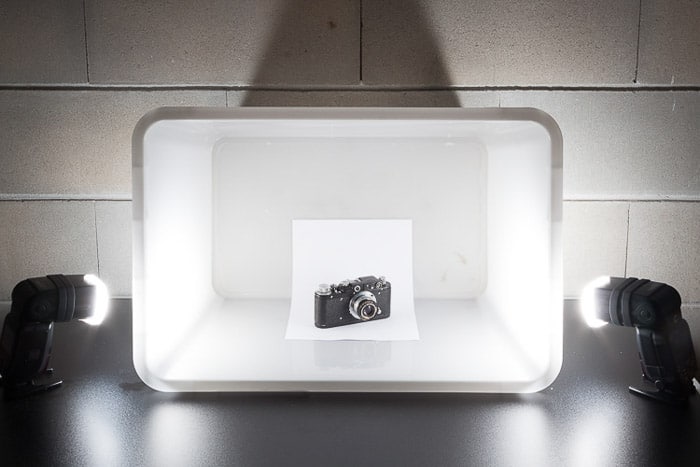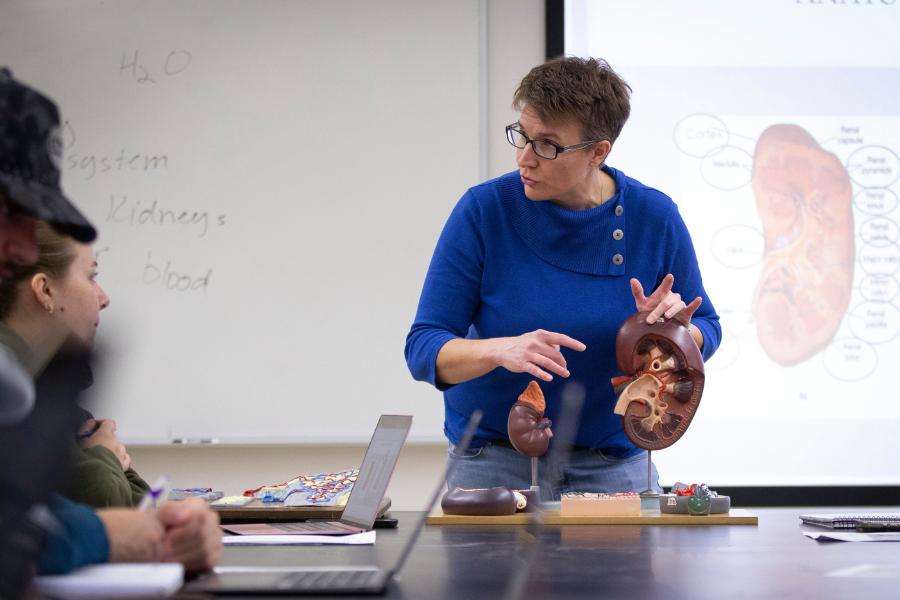Light boxes, braille writers and smell: How this child care center serves visually impaired kids – Los Angeles Times

Report on the Blind Children’s Center’s Contribution to Sustainable Development Goals
Executive Summary
The Blind Children’s Center in East Hollywood, Los Angeles, provides specialized early education and care for infants, toddlers, and preschoolers with visual impairments. This report analyzes the center’s operations and methodologies through the lens of the United Nations Sustainable Development Goals (SDGs), highlighting its significant contributions to Quality Education (SDG 4), Reduced Inequalities (SDG 10), and Good Health and Well-being (SDG 3).
Advancing SDG 4: Quality, Inclusive, and Equitable Education
The center’s core mission directly aligns with SDG 4, which aims to ensure inclusive and equitable quality education and promote lifelong learning opportunities for all. It addresses the specific needs of children with disabilities, a key target group within this goal.
- Early Childhood Development: By focusing on children from birth to age five, the center directly supports Target 4.2, ensuring access to quality early childhood development, care, and pre-primary education to prepare them for primary schooling.
- Adaptive and Specialized Learning: The center employs highly individualized learning plans to prevent developmental delays. This is achieved through specialized tools and curricula designed for visually impaired children.
- Sensory-Based Curriculum: Lessons incorporate touch and smell, using real objects like apples and pumpkins instead of plastic toys to create tangible learning experiences.
- Specialized Equipment: Classrooms are equipped with tools such as light boxes to develop awareness of objects and color, braille writers, and magnifying devices.
- Pre-Braille Instruction: Children are prepared for braille literacy through exercises that build finger strength and familiarity with tactile shapes and lines.
- Environmental Adaptations: Physical spaces are modified to accommodate student needs, such as dimming lights for children with light sensitivity and using tactile markers on floors to aid navigation.
Fostering SDG 10: Reduced Inequalities
The Blind Children’s Center is a critical institution for reducing inequalities by empowering children with disabilities and ensuring their social and economic inclusion from an early age, in line with SDG 10.
- Equal Access: As a Head Start and Early Head Start school, the center provides services to any child in Los Angeles County with a visual impairment, regardless of family income, directly addressing economic barriers to specialized education.
- Social Inclusion: The center operates on an inclusive model where children with visual impairments learn alongside typically developing peers. This integration fosters mutual understanding and prepares all children for a diverse society. Approximately 40% of enrolled students have a disability.
- Empowerment and Skill Development: The curriculum is designed to help children navigate their environment and adapt to challenges, building independence and confidence that is crucial for overcoming future obstacles and participating fully in society.
Supporting SDG 3: Good Health and Well-being
The center provides a holistic support system that extends beyond education, contributing to the health and well-being of both the children and their families, a cornerstone of SDG 3.
- Integrated Health Services: The center provides on-site access to health and disability services, including physical and occupational therapy, which are integrated into the children’s daily activities and playtime.
- Family and Mental Health Support: Recognizing the challenges families face, the center offers comprehensive support systems.
- Mental Health Counseling: Staff provide counseling to families to help them navigate diagnoses and associated challenges.
- Parental Education and Support Groups: The center hosts classes and groups for parents, teaching them how to support their child’s development (e.g., narrating actions) and helping them overcome cultural stigmas associated with vision loss.
Conclusion: An Integrated Model for Sustainable Development
The Blind Children’s Center serves as an exemplary model of how a specialized, community-focused institution can advance multiple Sustainable Development Goals simultaneously. By braiding together federal, state, and private funding (a form of SDG 17: Partnerships for the Goals), it provides an inclusive, high-quality educational environment (SDG 4) that reduces inequality (SDG 10) and promotes holistic well-being (SDG 3). The center’s work ensures that some of the most vulnerable children are not left behind, equipping them with the foundational skills necessary for lifelong learning and full participation in their communities.
1. Which SDGs are addressed or connected to the issues highlighted in the article?
Detailed Explanation:
-
SDG 4: Quality Education
The article is centered on the Blind Children’s Center, an institution dedicated to providing “child care and early education for infants, toddlers and preschoolers with visual impairments.” It details the specialized educational methods, tools (like braille writers and light boxes), and inclusive classroom environments designed to ensure these children receive a quality education, which is the core mission of SDG 4.
-
SDG 10: Reduced Inequalities
The article highlights the center’s role in addressing the specific needs of a vulnerable group—children with visual impairments. By providing specialized education and support, the center works to reduce the developmental and educational inequalities these children might otherwise face. The article explicitly mentions the goal of “building an inclusionary support system” and ensuring that children with disabilities are not “isolated.” Furthermore, its policy to “serve any L.A. County child with a visual impairment regardless of income” directly targets the reduction of inequalities based on both disability and economic status.
-
SDG 3: Good Health and Well-being
The center’s services extend beyond education to include crucial health support. The article mentions it “provides access to on-site health and disability services,” including “vision screenings,” “physical and occupational therapy,” and “mental health counseling to families.” These services are integral to the well-being of the children and their families, aligning with the goal of ensuring healthy lives and promoting well-being for all.
2. What specific targets under those SDGs can be identified based on the article’s content?
Detailed Explanation:
-
Target 4.2: Ensure access to quality early childhood development, care, and pre-primary education.
The article’s entire focus is on the Blind Children’s Center, which provides “child care and early education for infants, toddlers and preschoolers.” It describes how the center offers “a combination of early intervention, early learning and family support” to prepare children for primary school, directly contributing to this target.
-
Target 4.5: Ensure equal access to all levels of education for the vulnerable, including persons with disabilities.
The center’s mission is to provide equal educational opportunities for children with visual impairments. The article notes that “Educational support for youngsters with visual impairments… requires highly individualized learning plans to avoid potential development delays.” The inclusive model, where students with disabilities learn “alongside typically developing children,” is a clear example of working towards this target.
-
Target 4.a: Build and upgrade education facilities that are child, disability, and gender-sensitive and provide safe, inclusive, and effective learning environments for all.
The article provides concrete examples of how the center’s facilities are adapted for children with disabilities. It describes “specialized classrooms” with tools like a “neon green light… light box,” “a braille writer and magnifying device,” and adjustable lighting. The physical environment is also adapted, with “mats or just different textures on the floor” to help children navigate, which directly relates to upgrading facilities to be inclusive and effective.
-
Target 10.2: Empower and promote the social, economic, and political inclusion of all, irrespective of age, sex, disability, etc.
The center’s “inclusive approach keeps students learning alongside typically developing children.” This model is designed to prevent isolation and “build that community,” promoting the social inclusion of children with disabilities from a very young age. The article states, “Everything’s done together — that’s part of the inclusion process,” which is the essence of this target.
3. Are there any indicators mentioned or implied in the article that can be used to measure progress towards the identified targets?
Detailed Explanation:
-
Indicator for Target 4.2: Proportion of children under 5 years of age who are developmentally on track in health, learning, and psychosocial well-being.
The article implies this through its description of the center’s outcomes. It mentions that the specialized support helps “avoid potential development delays.” A parent’s testimony notes that her son “is not shy anymore” and “looks forward to playing with other kids,” indicating positive development in learning and psychosocial well-being.
-
Indicator for Target 4.a: Proportion of schools with access to adapted infrastructure and materials for students with disabilities.
The article explicitly lists the adapted materials and infrastructure available at the center, serving as a qualitative indicator. These include: “light box learning tool,” “braille writer,” “magnifying device,” “dimmed lights,” “lessons incorporate smell and touch,” “pre-braille learning exercises,” and an outdoor play area with varied textures (“grass meets rubber playground flooring meets concrete”) designed as a learning environment. The existence of such a specialized center serves as a measure of availability.
-
Indicator for Target 10.2: Proportion of people who report having personally felt discriminated against or harassed on the basis of a ground of discrimination prohibited under international human rights law.
While not a direct measurement, the article implies a reduction in discrimination and stigma. It mentions the center provides “support groups for parents to help them… overcome some of the cultural stigma associated with vision loss by encouraging acceptance.” The success of this program could be measured by the reduced feeling of stigma among families.
-
General Quantitative Indicators:
The article provides numbers that can be used as indicators of the center’s reach and the scale of the issue. It states that “More than 11,000 children under age 11 in the county are visually impaired.” It also notes that at the center, “A tenth of the students enrolled in its programs have a visual impairment” and “Approximately 40% of enrolled students have a disability.” These figures help quantify the need and the center’s inclusive composition.
4. Table of SDGs, Targets, and Indicators
| SDGs | Targets | Indicators Identified in the Article |
|---|---|---|
| SDG 4: Quality Education |
4.2: Ensure access to quality early childhood development, care, and pre-primary education.
4.5: Ensure equal access to education for persons with disabilities. 4.a: Build and upgrade disability-sensitive education facilities. |
– Provision of early intervention, learning, and family support for infants, toddlers, and preschoolers. – Individualized learning plans to avoid developmental delays. – An inclusive model where children with and without disabilities learn together. – Availability of adapted infrastructure and materials (light boxes, braille writers, magnifying devices, adjusted lighting, tactile learning tools). |
| SDG 10: Reduced Inequalities | 10.2: Empower and promote the social inclusion of all, irrespective of disability. |
– An inclusive approach where “Everything’s done together” to prevent isolation. – Provision of services regardless of family income. – Support groups for parents to overcome cultural stigma associated with vision loss. |
| SDG 3: Good Health and Well-being | 3.8: Achieve universal health coverage, including access to quality essential health-care services. |
– Access to on-site health services, including vision screenings. – Integration of physical and occupational therapy into regular activities. – Provision of mental health counseling for families. |
Source: latimes.com

What is Your Reaction?
 Like
0
Like
0
 Dislike
0
Dislike
0
 Love
0
Love
0
 Funny
0
Funny
0
 Angry
0
Angry
0
 Sad
0
Sad
0
 Wow
0
Wow
0




















































.jpg.webp?itok=0ZsAnae9#)


























